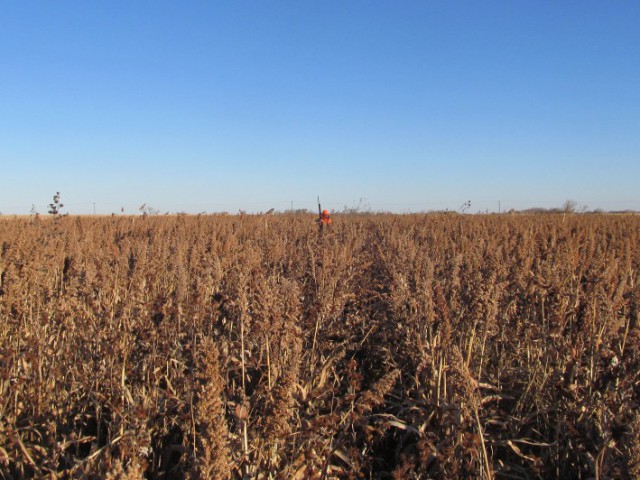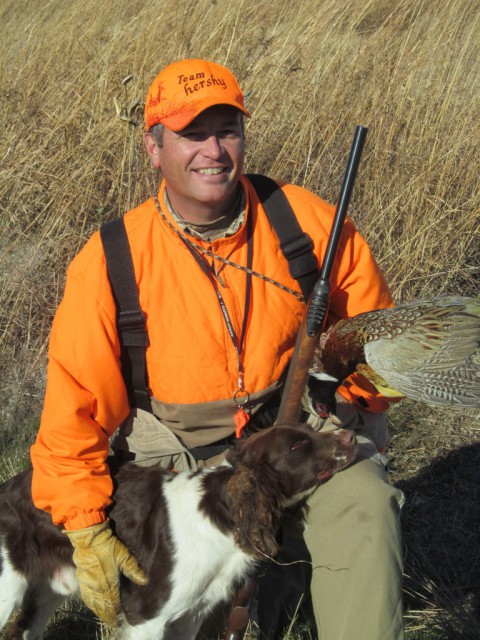To me the week of thanksgiving means chasing pheasant. And by this time of the season pheasants have become wily critters that make a living…well…staying alive. In fact, it doesn’t take very long after opening day shots are fired for the roosters to begin to use some crafty ways of dodging the hunter – both two and four-legged. This holds even more true in years when fewer young pheasants are on the landscape. This is when a it’s time to pinch some roosters.

Once exposed to the habits of hunters most pheasants usually deal with hunters in one of three ways – running, flushing wild or holding tight. Sometimes its a combination of them. Pinching is a technique that can be used successfully on all three strategies as it helps limit some of the bird’s options.
Pinching is the art of putting the squeeze on often unseen pheasants in a chunk of cover by pushing them into a spot where they either find themselves trapped or do not have the option to run any further and are faced with holding tight in hopes of being passed by. This pinch spot can be where a significant change in cover occurs, such as where native grasses end at a creek or cropfield, or into the path of another advancing hunter or two.
In this day and age I much prefer putting the pinch on a rooster with small groups. Maybe 2-5 hunters, decked out in hunter orange. Larger groups usually end up making more noise which often gives roosters an early warning and allows them to make an escape prior to the pinch being applied. Also needed is a minimum of two good dogs. Man’s best friend will help push the birds into the pinch and pinpoint the tigh-holders once it happens.
A lot has been written about hunters patterning game animals over the centuries. However, in my opinion the easiest critter on the planet to pattern is us. I have watched groups of hunters work the same fields in the exact same manner – back to back to back. Generally, it’s a pattern of parking at the easiest location, walking to, and through, the best cover seen from the truck and then walking the most direct path back. A few days of this and the birds figure out the best strategies and routes to avoid hunters.
When setting up a pinch I do my best to take this into consideration. If the plan is to pinch pheasants up to changes in habitat I do my best to work the cover as differently as possible as other hunters. Which may mean parking in a different spot, walking a less direct route to where I expect pheasants to be, and/or pushing birds in a different direction than most hunters. My goal is to throw the birds a screwball when they are expecting a fastball right up the middle. This simple act can confuse roosters enough to get them to hold tight, especially when pinched to a point in the cover that they no longer feel safe running through.

If the plan is to pinch birds between advancing hunters I do almost the opposite. My goal here is to get the birds started by hunting in almost the same method I believe most hunters would. The birds should react as they normally do – likely running well ahead of the hunter(s). However, if things go right they soon find their escape route is being cut off by the other advancing hunter(s) coming from the opposite direction. With hunters on both sides birds often hold tight and flush in range of one set of hunters or the other – sometimes both.
Key considerations when using either pinch is to keep noise to a minimum, wear orange, plan the hunt and have fun. Nothing ever works 100% of the time on roosters – but that is why we love to chase them so much.
hershy
 Nebraskaland Magazine
Nebraskaland Magazine



